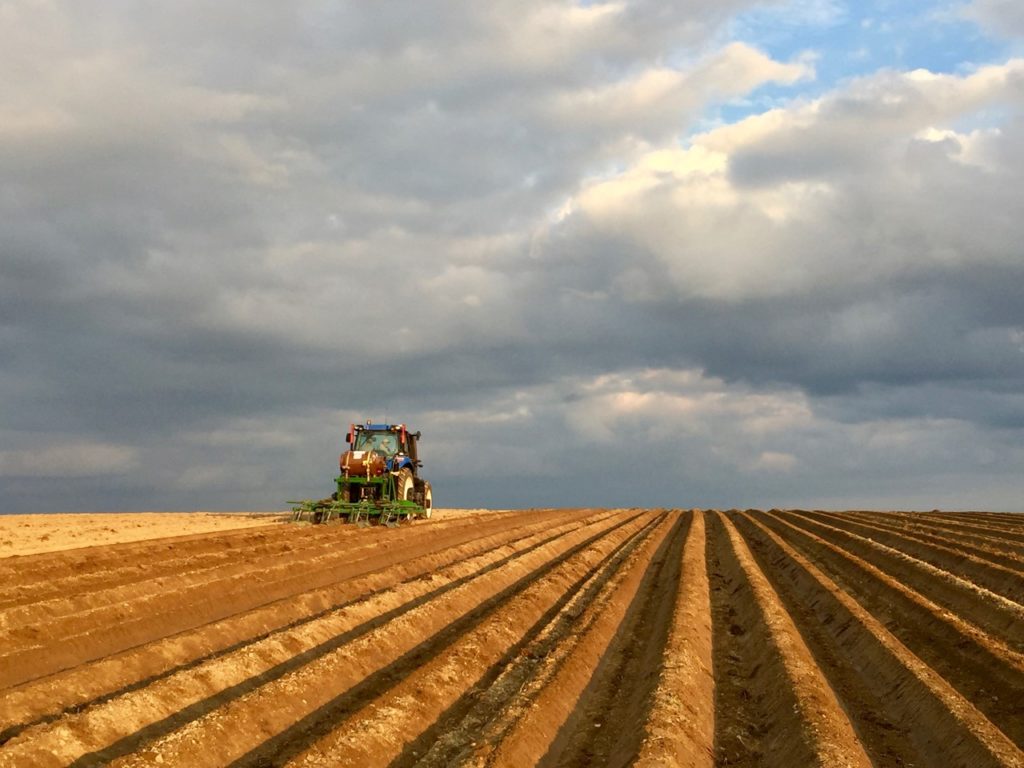
Fumigation reduces soilborne diseases, which helps sustainability
Improving sustainable potato production is an admirable goal for the potato industry. The basic concept of sustainable crop production is to produce an economically viable crop while maintaining or improving soil health and reducing the potential environmental impacts of farming.
As growers have long known, there is a link between the economic and environmental sustainability of a farm. Farmers have long been stewards of the land balancing the health of farm business with the health of the land. To improve environmental sustainability in the potato industry, it has to be linked to improved economic sustainability of the family farm.
A simplified way to imagine the link between the economic and environmental components of sustainable potato production is to envision what happens when marketable yield per acre increases. If marketable yields increased by 25% and stayed consistently at that level, current potato production volume both on individual farms and across the industry could be produced on less land.
The cost to produce each pound of potatoes would be lower because per-acre input costs would be spread over a larger marketable yield. Because less land would need to be farmed for the same level of production, farm-wide input costs would be lowered as well. A consistent yield increase would improve the economic sustainability of the farm. In addition, industry-wide environmental sustainability would improve simply because of a smaller over-all production footprint.
Producing more potatoes per unit of area seems to be a reasonable way to improve long-term sustainability of potato production. Many parts of the potato industry are focused on doing just that.
Potato breeders are working on new, more productive, disease tolerant varieties. Agronomists are devising better ways to fertilize and grow the crop. Plant pathologists are devising improved methods to avoid or suppress potato diseases.
This concept is not new.
Improving marketable production has been a driving force behind agricultural success for millennia. As new advances in agriculture have occurred — adoption of relatively inexpensive inorganic fertilizers, products to suppress pests, variety advances, etc. farmers have produced more potatoes on less ground.
A 25% marketable potato yield increase, as mentioned above, may seem unattainable. However, there is a reservoir of potato yield in many potato production areas currently available that could be tapped.
This yield gap is the difference between actual yields and potential yields. Reducing this gap is a key component to improving economic and environmental sustainability at the farm level and across the industry. To close that gap in production, new production practices need to be developed that unlock potential yield.
New potato ground is a limited resource. When new fields are brought into production, the act of farming changes the soil. New ground that has never been farmed experiences a transformational change from forest, prairie, or desert into farmland. The soil is no longer tethered to the natural physical and microbial influences that formed it. The microbial community in the native soil is also changed by the physical and chemical inputs required by the crop. Farming gives the soil a new purpose. That purpose is to produce a successful crop.
It is now up to the farm community to steward production in a way that maintains the productivity of the soil and cropping system. Soil health may be thought less as returning a soil to a native state and more as fostering a soil into the best physical and microbial condition relevant to producing a potato crop.
One might believe soil would remain productive at high levels over time with the use of proper amendments. However, soilborne disease changes the productivity of the soil. Left insufficiently suppressed, soilborne diseases build up over time limiting production and increasing the gap between actual yields and potential yields. In addition, soilborne diseases lead to less environmentally sustainable farming practices.
Often more nutrients are applied to make up for less responsive root systems. More acreage and new ground are needed to make up for production losses. The search for more productive farmland leads to production on fields further from the home farm which increases travel and transport of equipment and product. Soil health, therefore, is the linchpin to both economic and environmental stewardship.
Soil fumigation with chloropicrin-based Strike is a path that can build soil health and the resulting economic and environmental sustainability of a potato production system.
Soil fumigation is thought of negatively by some; a practice some believe limits yields because it limits soil biology.
Strike is a relatively new soil fumigant option in potato production. It reduces a broad spectrum of soilborne diseases that limit marketable yields including verticillium, rhizoctonia, black dot and common scab. Additionally, Strike application increases the populations of beneficial organisms in the soil that promote healthy plant growth.
Strike stimulates the growth of saprophytes in the soil. Saprophytes are the organisms in the soil that break down organic material and cycle needed plant nutrients. Saprophytes also prey on the resting or over-wintering structures of plant diseases. In addition, saprophytes associate with plant roots promoting healthy root and plant growth. Strike, therefore, contributes to a healthy soil by both suppressing soil borne diseases and promoting the growth of native organisms that are beneficial to soil and plant growth.
Strike has been shown to close the gap between current potato yields and potential yields by reducing soilborne disease, the biggest limitation to economic and environmental improvements in the potato industry.
 — Chad Hutchinson is the global director of potato research and market support for TriCal Group.
— Chad Hutchinson is the global director of potato research and market support for TriCal Group.














